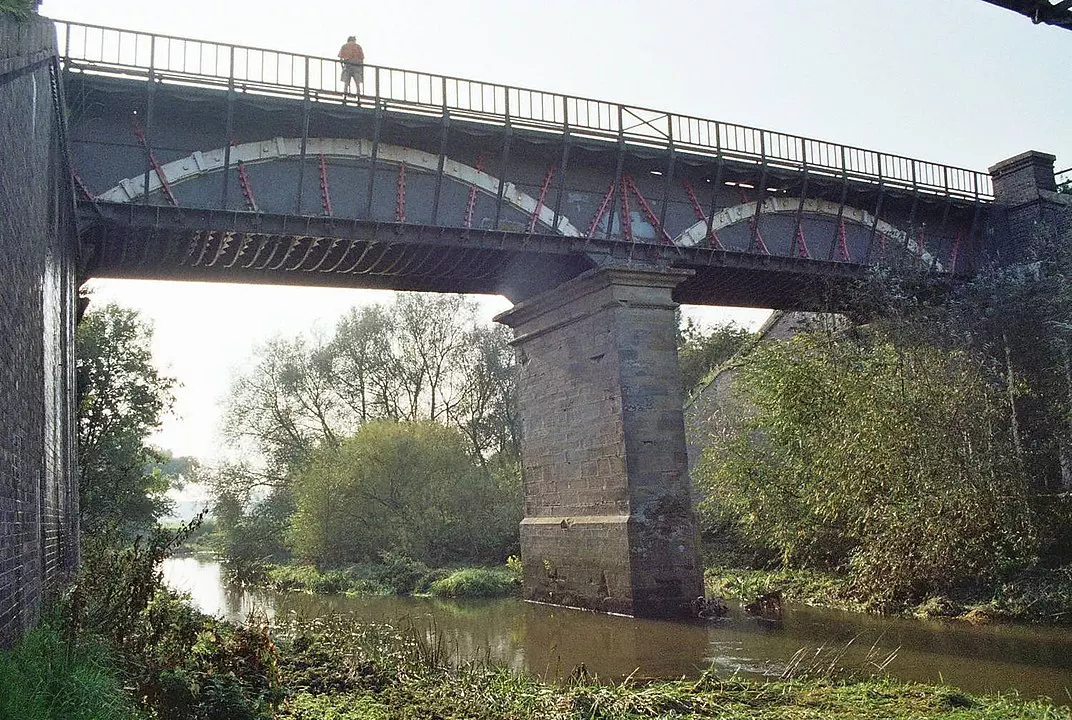Title: Capturing Timeless Marvel: The Iron Trunk Aqueduct
Introduction:
Welcome to a world where history meets grandeur—a world where the resplendent Iron Trunk Aqueduct stands tall, beckoning visitors to marvel at its magnificence. Built in 1811 by the accomplished canal engineer, Benjamin Beavan, this Georgian structure pays homage to the remarkable engineering feats of the past. Join us as we delve into the captivating story of this awe-inspiring aqueduct and the journey it has undertaken over the centuries.
A Testimony of Strength and Resilience:
Rising 10.8 meters above the ground, the Iron Trunk Aqueduct connects the neighboring towns of Wolverton and Cosgrove, carrying the illustrious Grand Union Canal over the mighty River Ouse. Its construction was necessitated by the collapse of the previous brick-built structure, which succumbed to the forces of nature.
The Brace of Adversity:
The Iron Trunk Aqueduct’s origins can be traced back to the early 19th century, when the Grand Junction Canal was in dire need of crossing the River Great Ouse, the lowest point between the Tring and Braunston summits. Initially, a system of locks facilitated the canal’s descent to river level, with flights strategically placed at both ends. However, this intricate arrangement proved time-consuming and led to significant water loss.
Ingenious Minds at Play:
William Jessop, the canal company’s esteemed engineer, envisioned a solution—the construction of a three-arch viaduct raised above the river level. This ingenious structure aimed to minimize water loss and eliminate the process of locking gates. In August 1805, Jessop’s vision came to life. However, fate had other plans, and a collapse occurred in February 1808, severing the canal.
The Rise of a New Era:
In the aftermath of this unfortunate setback, Benjamin Bevan, an esteemed engineer employed by the canal company, stepped in to design a replacement structure. Drawing inspiration from the success of cast iron trough aqueducts, such as Thomas Telford’s masterpiece, the Pontcysyllte Aqueduct, Bevan embraced this innovative technique for his creation.
A True Engineering Marvel:
Today, the Iron Trunk Aqueduct stands as a testament to Bevan’s vision and expertise. Its grandeur not only captivates those with an affinity for history but also attracts visitors from all walks of life. Be it strolling over its elegant arches or navigating the canal by boat, experiencing the Aqueduct’s splendor is an opportunity not to be missed.
Unveiling the Past:
As you traverse the Iron Trunk Aqueduct, take a moment to appreciate the panoramic surroundings. Walking beneath the structure, the striking view transports you through time, unveiling the remnants of a medieval village along the shimmering river. This journey encompasses not only engineering brilliance but also the echoes of an era past.
Conclusion:
For those with a penchant for history and architectural marvels, the Iron Trunk Aqueduct beckons, weaving a tapestry of time and breathtaking engineering expertise. So whether you choose to embark on foot, sail its tranquil waters, or simply immerse yourself in the surrounding beauty, this Georgian wonder promises an experience that will endure in your memories.
Note: The outline has not been included in the final blog post.
